Table of Contents
Top 10 Best National Parks In South Africa
Top 10 best national parks in South Africa are Kruger, Pilanesberg, Agulhas, Karoo, Mountain Zebra, Mapungubwe, Mokala, Addo elephant, Tankwa Karoo, Bontebok National Park. South Africa is country in the African continent in the southern part of the continent with variety of ecosystem and biodiversity hot spot of wild life and plant species. South African landscape is made up of high, plateaus and these are bases for its natural conservation of Mother Nature.
Below are the top 10 national parks in South Africa and other parks. Some of the best national parks in Africa are found in South Africa.
1. Kruger National Park
Kruger National Park is the best for wildlife viewing. One of the best places in the world to see wildlife is Kruger National Park. Elephant, lion, leopard, cheetah, rhino, buffalo, giraffe, hippo, and zebra are some of Africa’s most recognizable species.
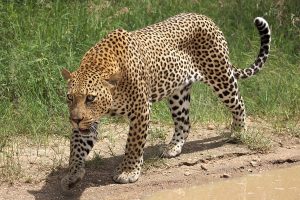 |
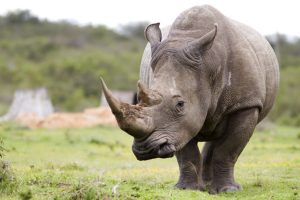 |
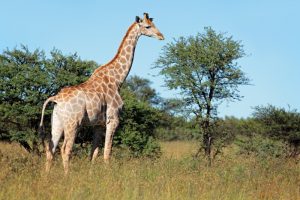 |
The Kruger National Park is a destination for explorers because it captures the spirit of African beauty and diverse fauna. A wide variety of safaris, excursions, and activities are provided by Kruger Park Safaris to ensure that your encounter with animals is nothing short of extraordinary.
They coexist in the bushveld with 136 other mammal species and more than 500 bird species. Beautiful granite kopjes (hills) dot the southern portion of this 7520 square mile park, which is surrounded by tropical forests in the north and the Lebombo Mountains, which rise from the savanna in the east.
Plan your safari vacation to the Kruger National Park using one of our suggested safari tour packages, which include both luxurious private safaris and reasonably priced group safaris.
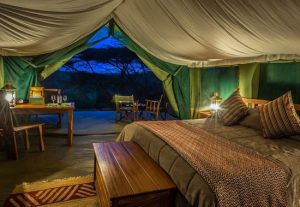 |
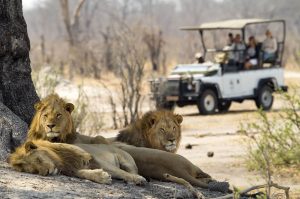 |
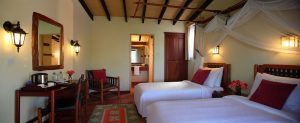 |
2. Pilanesberg National Park
Today, the majority of southern Africa’s large animal species—including lions, elephants, black rhinos, white rhinos, Cape buffaloes, leopards, cheetahs, zebras, giraffes, hippos, and crocodiles—reside in the Pilanesberg National Park.
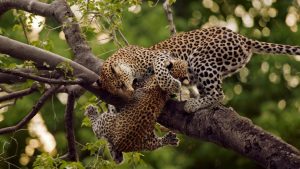 |
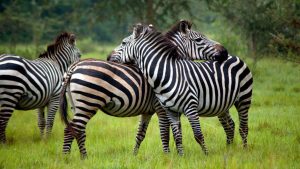 |
The most accessible of South Africa’s remarkable wildlife reserves is probably Pilanesberg National Park. This expansive area delivers exhilarating big game watching in a malaria-free environment because it is located in the environmentally rich transition zone between the Kalahari and the Lowveld. To meet your needs, a range of accommodations are offered.
The North West Province’s Bojanala Region, which is relatively close to Johannesburg, is home to Pilanesberg National Park, also known as Pilanesberg Game Reserve. It is South Africa’s fourth-largest park, with an area of 550km2. The park is located in the crater of a volcano that erupted 1300 million years ago. Three of the native tribes were the original owners of Pilanesberg. Around the reserve, numerous Stone Age and Iron Age sites provide evidence of human existence.
In between the sparse vegetation of the Kalahari and the lush Lowveld, Pilanesberg National Park is located. This abundant transitional zone draws a staggering range of game animals, plants, and species that are not frequently encountered together. Almost all of the native southern African animal species can be found here, including the Big 5, wild dogs, Roan, Tsessebe, and Sable antelope, as well as more than 360 different bird species.
3. Cape Agulhas National Park
Common Eland, Red Hartebeest, and other migrating species have undoubtedly always traversed the Cape Agulhas national park, despite the fact that it has never been a big game region. The coastal plains area is home to the Bontebok, Cape Grysbok, Steenbok, and Grey Rhebok.
The park is found in South Africa on the southern highest tip of Africa where the Atlantic and the Indian oceans inter meet,Cape Agulhas national Park has variety of attracting sight features like jagged landscapes, crashing waves, shipwrecks, a towering lighthouse and beautiful panoramic vistas.
Cape Agulhas National Park covers 22 700 hectares and is 72 km, Stretching from Struisbaai in the east and close to Pearly Beach in the west incorporating 45 km (28 miles) of sandy beach and 60 km (37.2 miles) of rocky shoreline.
Europeans arrived in the area in the early 1770s and by the 19th century the land had already been effectively utilized with many farms being established just inland from the shores.
The lighthouse was constructed in 1849 as a way to warn passing ships of the treacherous shoreline and the reserve was inaugurated in 1999 and has since been increased in size to its current parameters.
Wildlife to see at Cape Agulhas National Park.
The park has animals which are permanent resident there like; Bontebok, Cape Grysbok, Steenbok and Grey Rhebok, Common Eland, Red Hartebeest and other nomadic species have definitely always roamed the area
Vegetation zones of Agulhas National Park
The plains are the largest storehouse of lowland heath land or fynbos and renosterveld, with around 2 000 species of plants. Bot River Protea is identified by its beautiful rich pinkish-red flower that blooms making it easily seen months of between April and July.
4. Karoo National Park
Karoo National Park is situated in the north-east of South Africa’s Western Cape Province. The park is home to a variety of wildlife species, birds’ species and mammals that include Black Rhino and Buffalo.
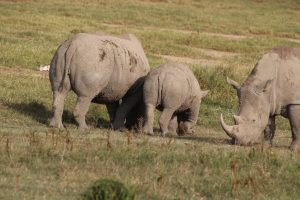 |
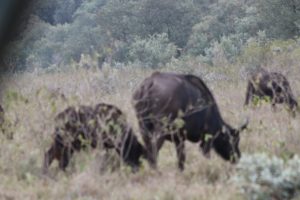 |
Karoo national park covers over 88 000 hectares of land and was established a protected area of government in 1979, it has an evident record of rich fossil history of the Beaufort group that lies in the sedimentary rocks of the cape province said to have been originally laid down here in 250years BP
The San people lived here for several thousand years and that the cattle herding Khios khoi were also present.
Wildlife to see at Karoo National Park
Karoo national park has over 66 different mammal species found in the wilderness after the reintroduction of this animal following their extinction after the local people hunted many of the animals down in the ild days of its genesis. Wildlife such as Black Rhino, Buffalo, Baboons, and Vervet Monkeys, Lion, Common Eland, Southern Gemsbok (Oryx) and Cape Mountain Zebra can be spotted on site. Greater Kudu are also common and can often be spotted along the watercourses just outside the safari park. Grey Rhebok, Springbok, Common Duiker, Steenbok and Klipspringer can also all be found in the park.
The Karoo National Park has around 59 different species of reptiles found in it, including 6 different tortoises and 35 lizard species.
Common Ostrich, Kori Bustards and Ludwig’s Bustards and Karoo Korhaans are often seen on the plains.
5. Mountain Zebra National Park
Mountain Zebra National Park was established in 1937 offering excellent viewing of Buffalo and Black Rhino as well as being the nature reserve that saved the Cape Mountain Zebra, the Mountain Zebra National Park is located in South Africa’s Eastern Cape Province. Mountain Zebra National Park is a spectacular wilderness gem hidden in the Eastern Cape Province of South Africa, just 12 km from the historically-rich town of Cradock.
Wildlife of the Mountain Zebra
While the safari park was originally founded to save the Cape Mountain Zebra from extinction, the main focus of the park nowadays is on biodiversity protection and populations of Bluebook, Springbok and Grey Rhebok can all be found within the national park. The game reserve is also considered to be one of the best locations in South Africa for viewing Mountain Reedbuck.
There are limited or no Lion in the reserve and the largest carnivore found in the park is Cheetah. Suricate, Bat-Eared Foxes and Black-Backed Jackals are the most regularly spotted carnivores and while another three species of cat; Caracal, Small Spotted Cat and African Wild Cat, are found in the safari park they are seldom seen.
Birding watching.
The park offers excellent sightings of some of the 257 species like the Cape Eagle-Owl, Southern Boubou, Acacia Pied Barbet and the Southern Tchagra can often be heard calling from the rocky outcrops above the camps.
6. Mapungubwe National Park
Mapungubwe National Park is a bird watchers paradise with 456 species of birds recorded as well as the Big Five of the African bush as being found in the park. Knowledge of bird calls and the ability to tell the calls apart will stand you in good stead amongst the cacophony of song constantly heard. Visitors to the Mapungubwe National Park in the Limpopo province will be awarded with a year round display of both resident and migrating birds.
This nature reserve boasts over 46 species of raptors, including the African fish eagle which can regularly be heard calling from the skies. Other species to watch out for include the rare Thick-billed Cuckoo, Three-banded courser, both Yellow- and Red-billed ox-peckers, Meve’s starling, Meyer’s Parrot, Tropical boubou, White-breasted cuckoo-shrike, and Boulder chat. The Maloutswa bird hide, found near to the Limpopo Forest Tented camp, acts as an excellent viewing location and is highly recommended to visit
Wild animals in Mapungubwe
Mapungubwe National Park is home to over 90 mammal species including the Big Five of the African bush – with black and white rhinoceros, wild dogs and magnificent cheetahs, herd of elephants, Vervet monkeys. Mapungubwe National Park is home to all three of the big cats; lion, leopard and cheetah as well as two species of hyenas but these are all rarely seen.
7. Mokala National Park
Mokala National Park is home to a number of rare and endangered South African wildlife species including Black and White Rhino, Tsessebe and Savanna Buffalo, the Mokala National Park is located in the Northern Cape Province. The park was named after the Tswana name for Camel Thorn trees, Mokala National Park covers 26 485 hectares and is situated in the Northern Cape just west of the N12 that links Kimberley to Cape Town.
What animals can you see in the Mokala?
The park is habituated by over 50 species of mammals found within the nature reserve such as White and Black Rhino, Roan Antelope and Tsessebe. On the plains one will see Giraffe, Plains Zebra, Red Hartebeest and Greater Kudu.
The bird species there are over 139 species of birds listed and these include Pygmy Flacon, Brubru, Crimson-breasted Shrike and Black-faced and Violet-eared Waxbills.
8. Addo Elephant National Park
Addo elephant national park is a magnificent natural conservation of an abundant and flourishing environment with over 417 species of birds, 95 different mammal species including the Big Five and a wide variety of reptiles, amphibians and fish all coexist.
The Addo Elephant National Park has 5 of South Africa’s biomes in it, more than any other conservation area in the country like; the Nama-Karoo, Cape heath land, grassland, forest and subtropical thicket – which is widest spread and most abundant in the reserve. The subtropical thicket includes species of plants like pork bush and spekboom.
What wildlife can I expect to see?
Addo is famous with herds of Elephants with over 300 of the animals. The park is also home to the Big Five animals, namely; Black Rhino, Lion, Leopard, Buffalo and of course Elephant. Aside from the Big Five there are 13 species of antelope including Eland, Kudu, Red Hartebeest and 22 species of carnivore; including Cheetah, Hyena and Wild Dog.
Bird watching is also a popular activity while in Addo Elephant National Park and there are over 417 species of birds found within the area. Coastal birds such as African Penguins and Cape Gannets, Crowned Hornbills, Dark-backed Weavers and KnysnaTuracos among others.
Bird-watching sometimes can be frustrating as it is difficult to spot the birds as a large portion of the reserve is thicket, amongst the branches and leaves
9. Tankwa Karoo National Park
Tankwa Karoo National Park is located on the border of the Northern and Western Cape near to the towns of Sutherland, Calvinia, Ceres and Middelpos, stretching at 144000 hectares. The peace and tranquility of their surroundings offers the crisp fresh air. Farmers began to occupy the land by the mid-18th century and by the 19th century farm boundaries had been established and property ownership claims were laid. A small section of land was proclaimed a nature reserve in 1986 and this was expanded over the years to reach the extent that the park is today.
What animals can one see in the Tankwa Karoo National Park?
The Park is home to a number if interesting animals of which visitors are most likely to see Steenbok on the plains and Klipspringer on the eastern hills. In the east one may be lucky enough to find Grey Rhebok, Greater Kudu and Springbok. Some game animals have been recently reintroduced into the reserve including, Red Hartebeest, Cape Mountain Zebra and Gemsbok. Savanna Baboons are found mainly in the east of the reserve and Black-backed Jackals are regularly heard calling at night.
Great birding opportunities
The area is considered a great bird-watching destination for those wanting to spot arid-area specials such as Burch ell’s Courser, Karoo Long-billed Lark and Tractrac Chat especially between the months of August to October. Birders might enjoy spending time exploring the sweet thorn-lined Tankwa riverbed where good sightings are often had. There is also a notably high diversity of water birds found at the Oudebaaskraal Dam and on the Tankwa River.
The large expanse of the park coupled with the small number of visitors provides those that do visit with the unique opportunity to explore the reserve on their own esteem and to really soak up the sense of isolation and peace found here.
Vegetation of the Tankwa Karoo
The national park’s vegetation is made up by low-growing shrubs, succulents and seasonal grasses. The western regions contain a mixture of low succulent shrub land while in the eastern regions one will find Roggeveld characterized by shale renosterveld. Many annuals and tall grasses appear after rainfall.
10. Bontebok National Park
Bontebok National Park is South Africa’s smallest national park. The park is located 5 km outside of Swellendam just off of the N2 national road covering an expanse of 3 900 hectares, Bontebok National Park is bordered by the Breede River to its south and by agricultural development and cropland to its east, west and north.
Lange berg Mountains rise in the north of the park forming a beautiful background to the landscape. There are 470 species of plants in the reserve including Swellendam heath land or fynbos, proteas and a mixture of renosterbos.
Wildlife to see.
Bontebok national park has animals like; Cape Mountain Zebra, Red Hartebeest, Grey Rhebok, Steenbok and Grysbok in the area. The largest of the 12 carnivores is Caracal, but the most commonly seen carnivore is the Small Grey Mongoose.
The most commonly seen reptiles found in the park are the Angulate Tortoises which are found in the sandy areas close to the river.
There are 201 species of birds found in the park that re vagrants such as the Kelp Gull, Cape Vulture and Western Osprey. On the open plains one might see Southern Black Korhaan and Denham’s Bustards and bird watchers should keep an eye out for Black Harrier and Agulhas Long-billed Larks.
List of national parks in South Africa
South Africa has other national parks such as West Coast, Garden Route, Camdeboo, Augrabies Falls, Ai-Ais/Richtersveld Transfrontier Park, Golden Gate Highlands, Kgalagadi Transfrontier Park, Kalahari Gemsbok, Marakele, Royal Natal, Namaqua, and Table Mountain.
West Coast National Park
The West Coast National Park is famous for its many spring flowers and excellent pelagic birding. However, it is home to many marine species and small mammals.
Wildlife to See in the West Coast
Wild life such as Common Eland, Red Hartebeest, Steenbok, Common Duiker and Cape Grysbok, and those that have been reintroduced. Among the 19 rodent species found in the park, only the Four-striped Grass Mouse is sometimes seen foraging around the park-run picnic sites.
Carnivores are all mostly secretive or nocturnal, however; tourist occasionally have sightings of Yellow Mongoose, Bat-Eared Fox and Small Grey Mongoose. Caracals, Honey-Badgers and Black-backed Jackals are also found in the area.
The nature park’s vegetation is dominated by the Cape Floral Kingdom and each year after the winter rains the visitors are met with a magnificent display of annually flowering plants blanketing the landscape. Yellow Daisy-bush, Proteas, Milk bush and Yellow Milk-bush are just some of the plants that make up the blossoming display and the rich diversity of flowers has been split into 36 different botanical communities.
Garden Route National Park
Garden Route National Park is home to various of mammals, birds, reptiles and marine animals and this makes it a magical destination to explore for all nature lovers and bird watcher, Whale watching, with no fewer than 15 species of Whales and Dolphins being found in the area, best site and nature view point is. The Garden Route National Park is home to some 85 species of mammals with the most well-known of these being the Elephant. Visitors to the area can spend time with the Elephants at the Knysna Elephant Park.
The forests are home to Bushbuck as well as Blue Duikers while Common Eland can be found on the slopes in the east of the nature reserve, and Common Duiker are sometimes seen in areas with clearing between thickets along the coast. Savanna Baboons and Vervet Monkeys are found throughout the region and have been known to be a menace at times. One of the most commonly seen mammals in the area, especially at Storms River Mouth is Rock Hyrax or Dassies.
Birding in the Garden Route
Over 371 species of birds are found in the park of which 45 are vagrants and are not seen often. Some others include 15 species of Duck and Goose; Yellow-billed Duck, Cape Shovler and African Black Ducks to name a few. The Langvlei and Rondevlei lakes are the best areas for bird-watching and there is an observation hide on the north bank of each location.
25 different snake species including Cape Cobras, while the most common snake in the area is the large and venomous Puff Adder can be found in the park area. 26 different species of Fish and the Knysna Seahorse inhabits the Knysna Estuary can be in the estuaries and fresh waters. There are also a number of Shark and Shark-like species in the waters around the area including Great White Sharks, Spotted Ragged-Tooth Sharks and the rare and largest of the species, Whale Sharks.

